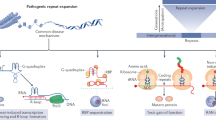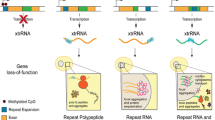Abstract.
The repeat expansion diseases are genetic disorders caused by intergenerational expansions of a specific tandem DNA repeat. These disorders range from mildly to severely debilitating or fatal, and all have limited treatment options. How expansion occurs and causes disease is only now beginning to be understood. Efforts to model expansion in mice have so far met with only limited success, perhaps due to a requirement for specific cis- or trans-acting factors. In vitro studies and data from bacteria and yeast suggest that in addition to secondary structures formed by the repeats, components of the DNA replication and recombination machinery are important determinants of instability. The consequences of expansion differ depending on where in the gene the repeat tract is located, and range from reduction of transcription initiation to protein toxicity. Recent advances are beginning to make rational approaches to the development of therapies possible.
Similar content being viewed by others
Author information
Authors and Affiliations
Additional information
Received 13 December 1999; received after revision 3 February 2000; accepted 7 February 2000
Rights and permissions
About this article
Cite this article
Usdin*, K., Grabczyk, E. DNA repeat expansions and human disease . CMLS, Cell. Mol. Life Sci. 57, 914–931 (2000). https://doi.org/10.1007/PL00000734
Issue Date:
DOI: https://doi.org/10.1007/PL00000734




